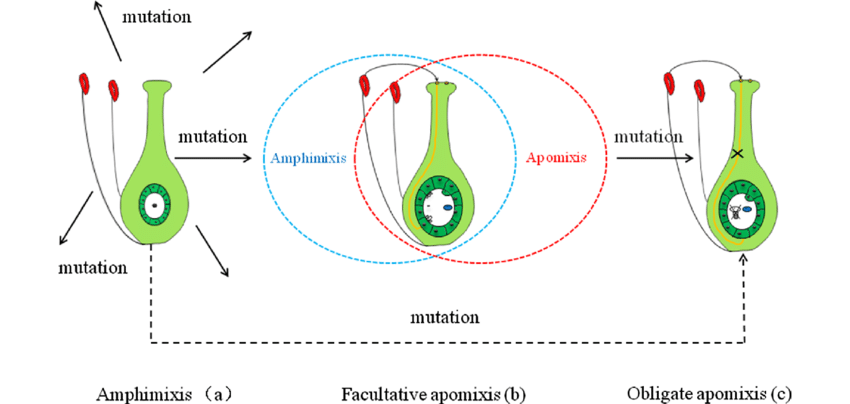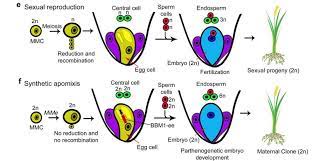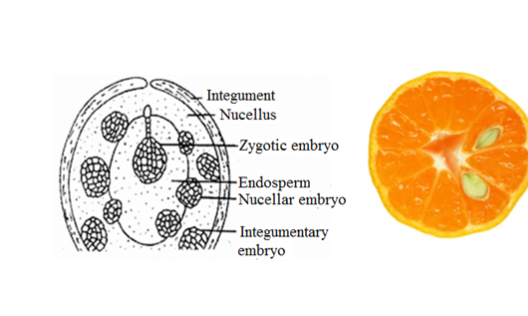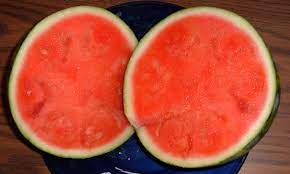APOMIXIS POLYEMBRYONY AND PARTHENOCERPY
Introduction
Apart from usual vegetative and sexual reproduction, there are some plants which show certain special types of reproduction called apomixis and polyembryony. Apomixis is a modified form of asexual reproduction whereas; Polyembryony is a type of sexual reproduction.
In apomixis, the seeds are produced without the fusion of gametes (or fertilisation) whereas; polyembryony refers to the occurrence of many embryos in the same seed. Apomixis and Polyembryony can be seen mostly in plants.
Parthenocarpy refers to development of fruit without fertilization.
Let’s see one by one.
APOMIXIS
- The word “Apomixis” is derived from two Greek words, i.e., “apo” meaning away from and “mixed” meaning the act of mixing or mingling.
- It is a modified form of asexual reproduction in which an egg or other cells associated with the egg (synergids, antipodals, nucellus and integuments) develop into an embryo without fertilization.
- The plants formed by apomixis are called apomictic and are genetically identical to the mother plant.
- Depending on the tissue involved, apomixis is of mainly two types:

Gametophytic apomixis – When an embryo arises from the unfertilized egg cell, it is called gametophytic apomixis. Here, the egg is produced without meiosis, therefore it is diploid.
Sporophytic apomixis – When embryos are formed from the sporophytic tissues, such as nucellus or integument tissues, it is called sporophytic apomixis or adventitious embryony. Nucellar embryony is seen in citrus and mango. In this case, nucellar cells of an ovule develop into embryos. It is independent of fertilization and sexual reproduction.
- The term apomixis was given by Winkler (1908).
- Apomixis is very common in higher plants, especially in some flowering plants in which the embryo may develop from an unfertilized egg cell, or from a cell other than the egg cell within the embryo sac, or from the cell outside the embryo sac.
- Examples of Apomictic seeds: Gramineae, Rosaceae, Compositae, and

POLYEMBRYONY
- It is defined “as the phenomenon of having more than one embryo developed from a single fertilized egg or in a single seed.”
- Polyembryony refers to the formation of more than one embryo in a seed, e.g., citrus, mango,
- Polyembryony was first discovered by Antonie van Leeuwenhoek (1719) in citrus fruits and was confirmed later by Schnarf (1929). Here, multiple embryos exist that are derived from nucellar cells along with sexually-derived embryos. This sporophytic budding is called adventive polyembryony.
- This phenomenon can be mostly observed in Gymnosperms (conifers). In angiosperms, it is generally present as an unusual feature except in a few cases like Citrus, mango, Nicotiana, etc.
- There are many ways by which multiple embryos can be formed:
Cleavage polyembryony – Here, the zygote splits and produces many embryos. It occurs in gymnosperms.
Fertilisation of antipodals or synergids – Here, antipodals or synergids also get fertilised along with the egg cell leading to the formation of multiple embryos.
- Polyembryony occurs in vertebrates and invertebrates. Identical twins are the result of polyembryony in humans.
- The causes of polyembryony in Angiosperms are Cleavage of proembryo, e.g., family Orchidaceae.

PARTHENOCARPY
- It refers to the natural or artificially induced production of fruit without fertilisation of ovules, which makes the fruit seedless.
- Parthenocarpy occasionally occurs as a mutation in nature; if it affects every flower, the plant can no longer sexually reproduce but might be able to propagate by apomixis or by vegetative. For examples, many citrus varieties undergo nucellar embryony for reproduction, instead of solely sexual reproduction, and can yield seedless fruits.
- In some plants, pollination or stimulation is required for parthenocarpy, called stimulative parthenocarpy. Plants that do not require pollination or other stimulation to produce parthenocarpic fruit have vegetative parthenocarpy.
- Seedless cucumbers are an example of vegetative parthenocarpy, seedless watermelon is an example of stenospermocarpy as they are immature seeds (aborted ones).
- Commercial Importance- Seedlessness is desirable trait in edible fruit with hard seeds such as banana, pineapple, orange and grapefruit. Parthenocarpy is also desirable in fruit crops that may be difficult to pollinate or fertilize, such as fig, tomato and summer squash.

Parthenocarpy
In dioecious species, such as persimmon, parthenocarpy increases fruit production because staminate trees do not need to be planted to provide pollen. Horticulturists have selected and propagated parthenocarpic cultivars of many plants, including banana, fig, cactus pear (Opuntia), breadfruit and eggplant. Plant hormones such as gibberellin, auxin and cytokinin could stimulate the development of parthenocarpic fruit. That is termed artificial parthenocarpy.
Very nice bhaiya
Thanx Rahul. Share to others please.
I like this and found it useful.